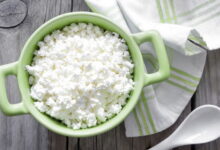Deep in the heart of the Amazonian rainforest, there is an ancient legend about a small settlement inhabited by a gentle, quiet couple who unfortunately could not have children. Taking pity on their plight, a kind spirit gifted them with a beautiful, smiling boy who won the affection of this entire village with his kind heart. However, a malevolent spirit, envious of such universal love, took the form of a poisonous snake and fatally bit the boy.
Grief consumed the hearts of the villagers, but once again, the benevolent spirit came to their rescue. He planted the left eye of the beloved boy in the jungle, and gave the right eye to his parents with the condition that they bury it in the ground near their hut. As a result, a remarkable plant sprouted, its fruit bearing an eerie resemblance to the large, jet-black, wide-eyed gaze of the departed boy, with its healing properties mirroring his gentle soul.
This is the enchanting legend of the miraculous guarana plant, as told by the Maué, Tupi, and Guarani tribes of South America. However, there’s more truth to the story than meets the eye. The incredible similarity of its fruit to human eyes is undeniable, and its health-boosting properties have led it to be hailed as one of the top 10 superfoods, despite the reluctance of mainstream medicine to classify it as a medicinal product. Why is that?
What it is
Guarana is an evergreen climbing vine or shrub that can attain an impressive height of 10 meters. Its native habitat is the Amazonian jungle of South America.
**Description**
It is distinguished by dark branches, large, elongated, serrated leaves, and showy white-reddish flowers that grow in clusters (inflorescences). When it’s about 3 years old, it begins to bear fruit, about the size of a hazelnut, covered in a thin skin that may be bright yellow or grayish-green in color, with a blood-red tip. When ripe, it bursts open to reveal a single seed (black or blue-ish purple) the size of a large grape, resembling an eye. It fruits during the winter months. By age 5, a single shrub can yield up to 3 kg of fruit.
When it comes to caffeine content, this fruit certainly rivals coffee beans, boasting twice the caffeine, which the plant uses as a pathogen defense mechanism, as such high concentrations become toxic.
**Processing the beans**
The fruit is harvested and soaked to detach the seeds from the pulp (otherwise it begins to ferment and quickly molds). They are then washed, dried, and roasted to remove the skin. The final step is to grind them into a fine powder, which is the extract added to supplements and food. The locals mix it with water or milk to create a drink that tastes and performs much like coffee or cocoa.
**Production**
In the 16th century, Spanish authors first mentioned guarana in their chronicles. A Brazilian doctor, Luiz Pereira Barreto, was the first to use the fruit commercially, launching production of guarana-based soft drinks in 1906, swiftly followed by the introduction of the famous sparkling drink, “Guarana Champagne Antarctica”.
From the mid-20th century onwards, it has been widely used by the food industry, not only for energy drinks, but also in teas, chocolate, pasta, sweets, lollipops, and chewing gum. In Brazil, it’s rare to find a product that doesn’t contain guarana extract, from breakfast cereals to toothpaste. It is the primary source of caffeine in South America.
Today, guarana is primarily marketed as a natural fat-burning supplement for weight loss and a sports nutrition product with psycho-stimulating and general tonic properties. However, the extent of its efficacy is disputed by many, including the conventional medical community.
**Etymology** The Portuguese word “guarana” comes from the language of the Maué people (an Amazonian tribe), in which it means “fruit resembling human eyes”.
Composition
Guarana’s value lies in its seeds, which have a high concentration of caffeine, sometimes called guaranine; its properties are identical to the caffeine found in coffee beans, but its concentration is double: 20 mg per 100 g of the natural product.
However, this plant’s beneficial qualities are not limited to its caffeine. Its seeds also contain other valuable bioactive substances, such as:
-xanthine alkaloids (including theobromine and theophylline, natural heart stimulants)
-polyphenols (the flavonoid antioxidants catechin and epicatechin)
-amides (derivatives of oxygen-containing acids)
-saponins
-vitamins A, E, and almost the entire B group (of which thiamin, niacin, and riboflavin are predominant)
-a range of minerals: zinc, magnesium, manganese, potassium, iron, sodium, phosphorus, calcium, copper
-tannins
It is a protein-based plant food with zero calories. It contains no carbohydrates, and its fat content is negligible.
**Fun fact** Some South American tribes valued guarana’s health benefits so highly that they used it as currency.
Benefits
Dietary supplements based on guarana seeds are widely available. They are most often marketed as energy drinks (in sports nutrition) and fat burners (in dietetics). Beyond these basic properties, it is attributed with a range of other health benefits.
For your health**
South American tribes have used guarana seeds for centuries to treat various ailments. Today, some research has partially corroborated their beneficial effects on health, but there have not yet been enough experiments and tests to formally recognize the plant as a medicinal product or to begin using it in pharmacology.
Guarana seed extract is believed to have the following beneficial effects on the body:
-alleviates various types of pain – from headaches to toothaches
-reduces fever, bringing relief to fever sufferers
-relieves muscle spasms
-boosts the immune system, reducing the likelihood of bacterial infections
-combats fatigue, increasing productivity
-helps with arthritis, reducing joint inflammation
-improves digestion, stopping diarrhea
-cures hangovers
-lowers the risk of cardiovascular diseases: atherosclerosis, ischemia, heart attack
-alleviates dysentery and neuralgia
Enhanced cognitive function is another quality noted by manufacturers, consumers, and even scientists. With regular use of the extract, memory improves, concentration is enhanced, and the learning process is optimized (the results are quite impressive).
Its calming properties are also often mentioned: the extract is believed to help relieve stress, improve sleep, and strengthen the heart muscle. However, this is a somewhat contentious point since guarana’s primary effect is stimulating, meaning that it actually activates the body’s mental activity, eliminates fatigue, drowsiness, and lethargy, and increases efficiency, muscle tone, and reaction speeds, as well as sharpening hearing and vision.
For weight loss
Guarana is primarily recommended for weight loss as an ingredient in fat-burning, appetite-suppressing supplements. In theory, the seed extract should promote weight loss because it:
-has a stimulating effect, encouraging physical activity that burns excess calories
-improves digestion, enhancing nutrient absorption and preventing fat storage
-has a fat-blo



